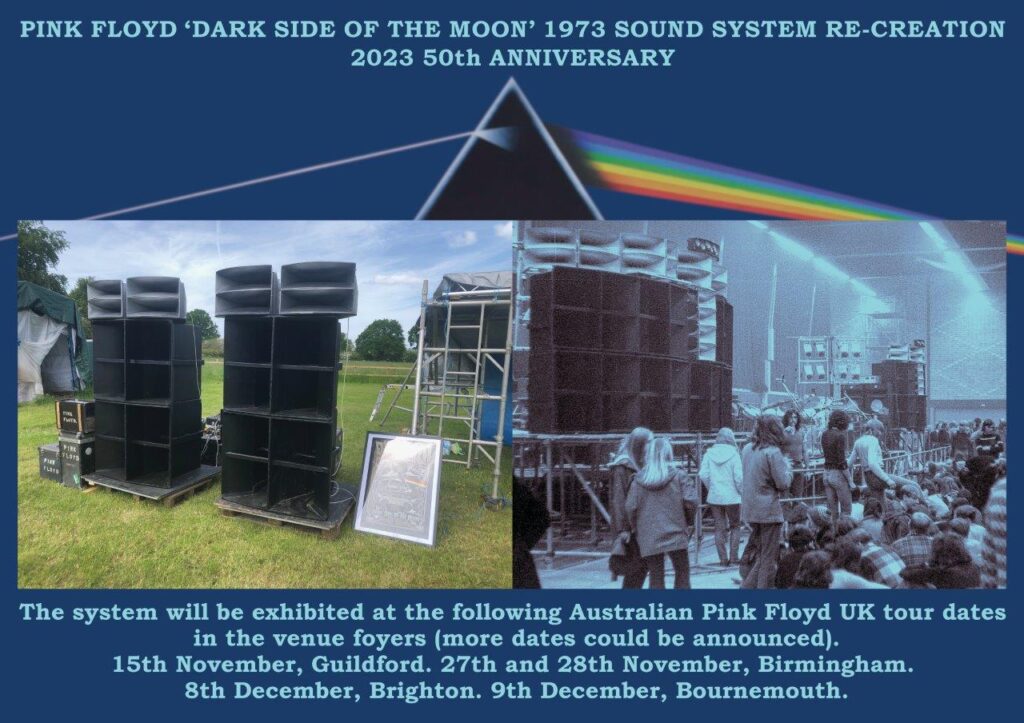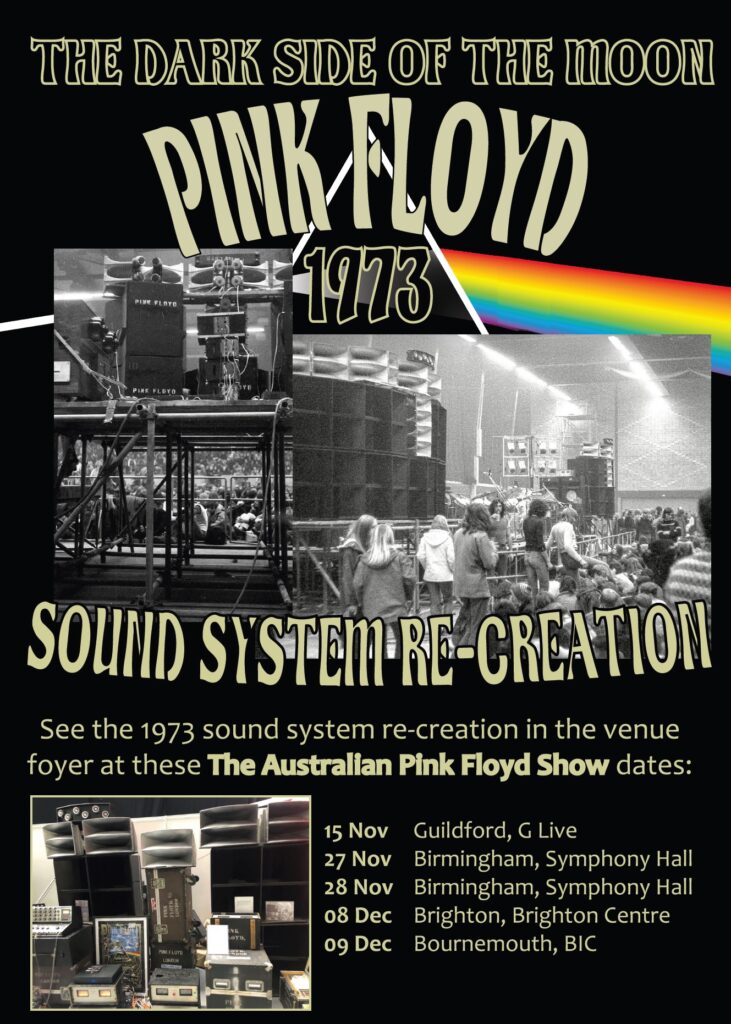Pink Floyd Sound System in 50 Year Anniversary Viewing

The Pink Floyd PA system, used on the 1973 tour of Dark Side of the Moon, is being recreated in 2023! CH Vintage Audio will display the equipment at 5 of the Australian Pink Floyd concerts in the UK. It will appear in the foyers at the concerts. Shows are on at Guildford, Birmingham, Brighton and Bournemouth.
Sound systems that could fill a large hall, let along a stadium, were developed alongside Pink Floyd growing as a band. Acoustic amplification used to be the order of the day. Philharmonic halls and the likes would have an angled ceiling to broadcast the audio at the audience.
Pink Floyd PA Book
Chris Hewitt from Cheshire, England, has the UK’s largest collection of Vintage audio equipment has has been documenting his experience with the development of large rock sound systems over the past few years in a 3 volume set of books.

The Pink Floyd Experimentation with Sound
Pink Floyd is renowned not only for its progressive and psychedelic music but also for the innovative sound systems and live show productions that evolved alongside their musical ambitions. Over the years, their concerts became immersive auditory experiences. Here’s a brief overview of the evolution of Pink Floyd’s sound systems:
- Quadraphonic Sound: Pink Floyd was among the first bands to experiment with quadraphonic sound. This involved using four speakers placed in the corners of a venue, giving the audience a surround sound experience. They used this system during their “Ummagumma” tour in 1969.
- Azimuth Coordinator: A pioneering piece of equipment, the Azimuth Coordinator was a joystick-operated quadraphonic pan pot system. It enabled the band to move sound around a venue in a circle, adding another dimension to their live performances. This was especially prominent in performances of “Echoes” and “Interstellar Overdrive.”
- Wall of Sound: As their shows grew in size and ambition, so did their PA (public address) system. By the mid-1970s, they had amassed an impressive “Wall of Sound”, which was a towering collection of speakers and amplifiers. It provided an incredibly powerful and clear sound output. It ensured that even those at the back would hear the music in high fidelity.
- The Division Bell Tour: For their 1994 “The Division Bell” tour, Pink Floyd utilized one of the most advanced sound systems of its time. Sound designer Andy Jackson and Britannia Row, the band’s longtime sound company, collaborated on a system that provided impeccable sound clarity across large stadiums. It was also one of the earliest uses of delay towers in stadium concerts to ensure that the sound reached all parts of the venue simultaneously.
- Sound Effects and Soundtracks: Apart from the music played by the band, Pink Floyd’s shows were filled with a plethora of sound effects – from the ticking clocks in “Time” to the crashing aeroplanes in “On The Run”. These sound effects, often played from tape or, later on, digital media, were a crucial part of their sound system setup.
- The 2005 Live 8 Performance: During their reunion at Live 8 in 2005, Pink Floyd used a state-of-the-art sound system that combined advancements in speaker technology and digital sound processing to deliver a crisp and immersive audio experience.
The band’s emphasis on delivering the best possible audio experience for their fans led to several technological advancements in live sound production. The quality and clarity of the sound systems Pink Floyd used, combined with their innovative music and stage designs, ensured that their concerts were not just gigs but multi-sensory experiences.


